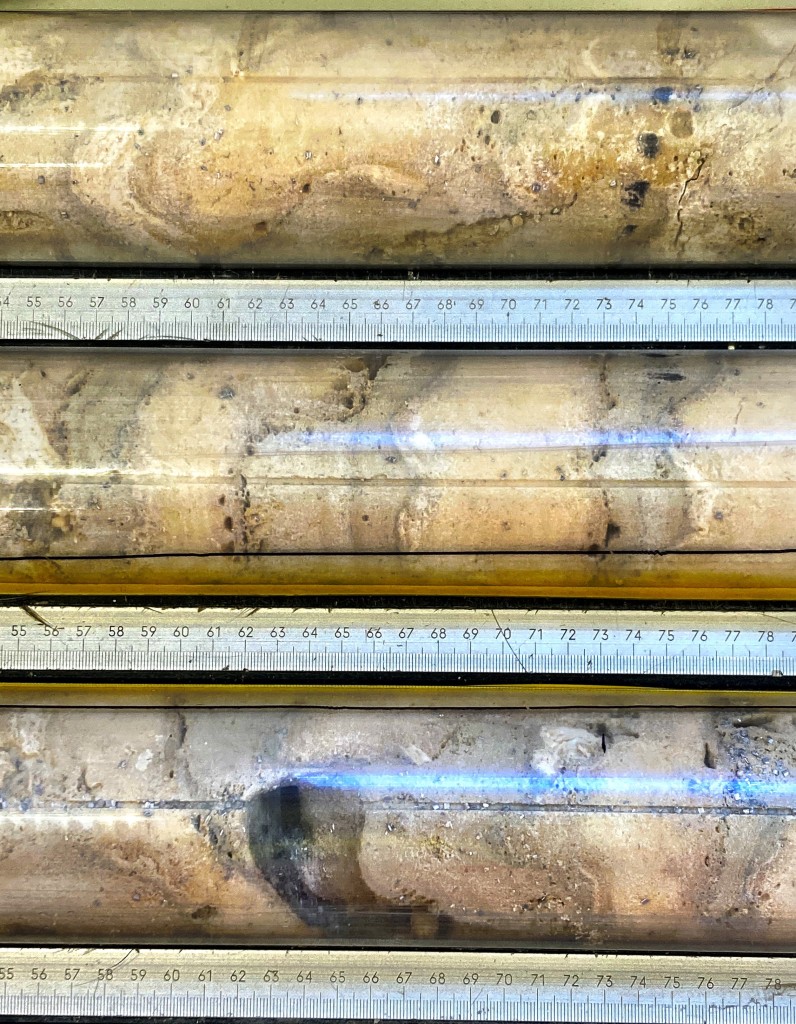For many people, the “magic of a first look” is often associated with someone’s wedding day.
Not Jody Webster.
When he walks into the mess waxing poetic about “the first look”, he’s referring to the fossil reef cores we just recovered.
I smile at the pure, unadulterated joy on the Co-Chief Scientist’s face – it’s always special to see a scientist light up in this way. Webster is positively beaming as he begins telling me about the most recently acquired sample.
“We got our first really good look at the interior structure of these fossil reefs,” he says emphatically. “It’s exactly what we’ve been hoping to see!”
When we recovered the first core, we weren’t able to go more than a few meters down. As evidenced by Webster’s jubilant demeanor, we’ve had much better luck at the second site.
“We weren’t really able to get into the reef at the first site,” Webster says. “But here we were able to get into the proper fossil reef framework. It was incredibly pleasing and exciting to see the high level of preservation of the fossilized corals and the integrity of the core itself.”
The remains of this ancient reef are about 400 meters deep and the fossilized specimens here range in age from about 133 – 170,000 years ago.
“By taking core samples from this reef, we’re hoping to gather data spanning that period of time and beyond,” Webster say. “And acquire the corresponding records of climate and sea level change for that period.”
Now that the core has been labeled, curated, scanned by the Multi-Sensor Core Logger (MSCL), and briefly described by the offshore science team, the next steps onshore will include identifying the genus and species of the coral and algae.
“We’ll compare those with where we find the same species on the modern reef,” Webster says. “If we go to the modern reef, and we know that certain species and types grow in a certain environment at a certain water depth and wave energies, we can use that information to reconstruct the habitat they were growing in.”
In addition to thick crusts of coral and algae, the reef framework contains cavities and crevices filled with thick light grey microbialite sediments – which provide a whole host of data in addition to the fossilized corals.
“Microbialites can be very accurate proxies of past water quality conditions,” Webster explains. “They capture a record of the composition of the sea water with respect to the rare earth element concentration in the carbonate material. We can use that to reconstruct sediment run-off from the land, in the case volcanic island of Hawaii through time.
Starting at the bottom of the core and making their way up to the top of the core, the team can visualize how the habitat and environment has changed through time, allowing them to interpret the evolution of the reef as a whole.
As we wrap up our conversation, I comment on Webster’s enthusiasm and excitement for this particular core. He reminds me how difficult this entire process is.
“This is hard work – each meter of core that we get is hard fought, hard won, and very precious,” he says. “We’ve got to celebrate when we can.”
Caption top picture: Recently acquired cores await processing on the aft deck of MMA Valour. They are encased in plastic to prevent any fossilized reef deposits from falling out.


Caption top picture: Recently acquired cores await processing on the aft deck of MMA Valour. They are encased in plastic to prevent any fossilized reef deposits from falling out. Pictures: MLParker@ECORD_IODP

One thought on “The magic of the first look”